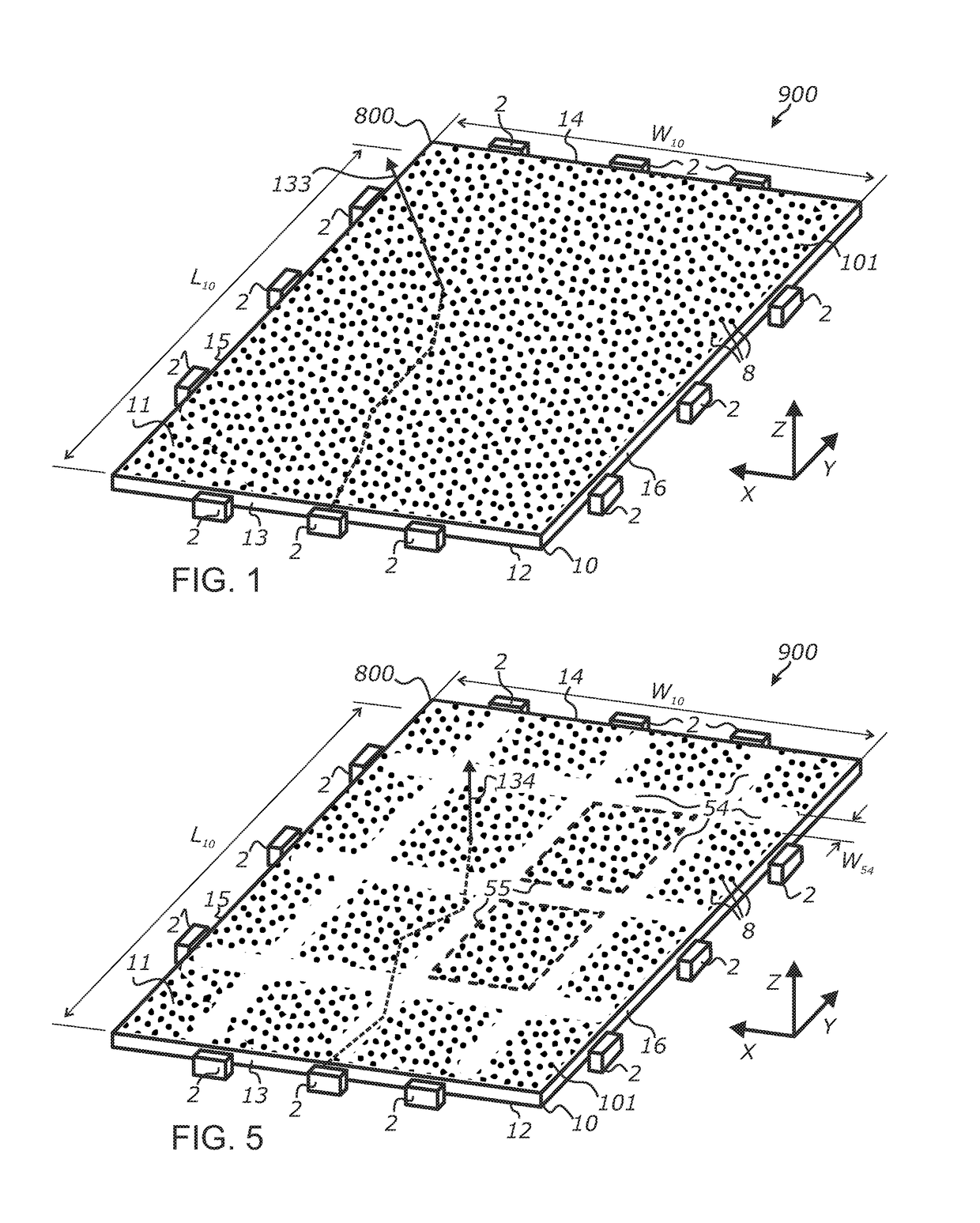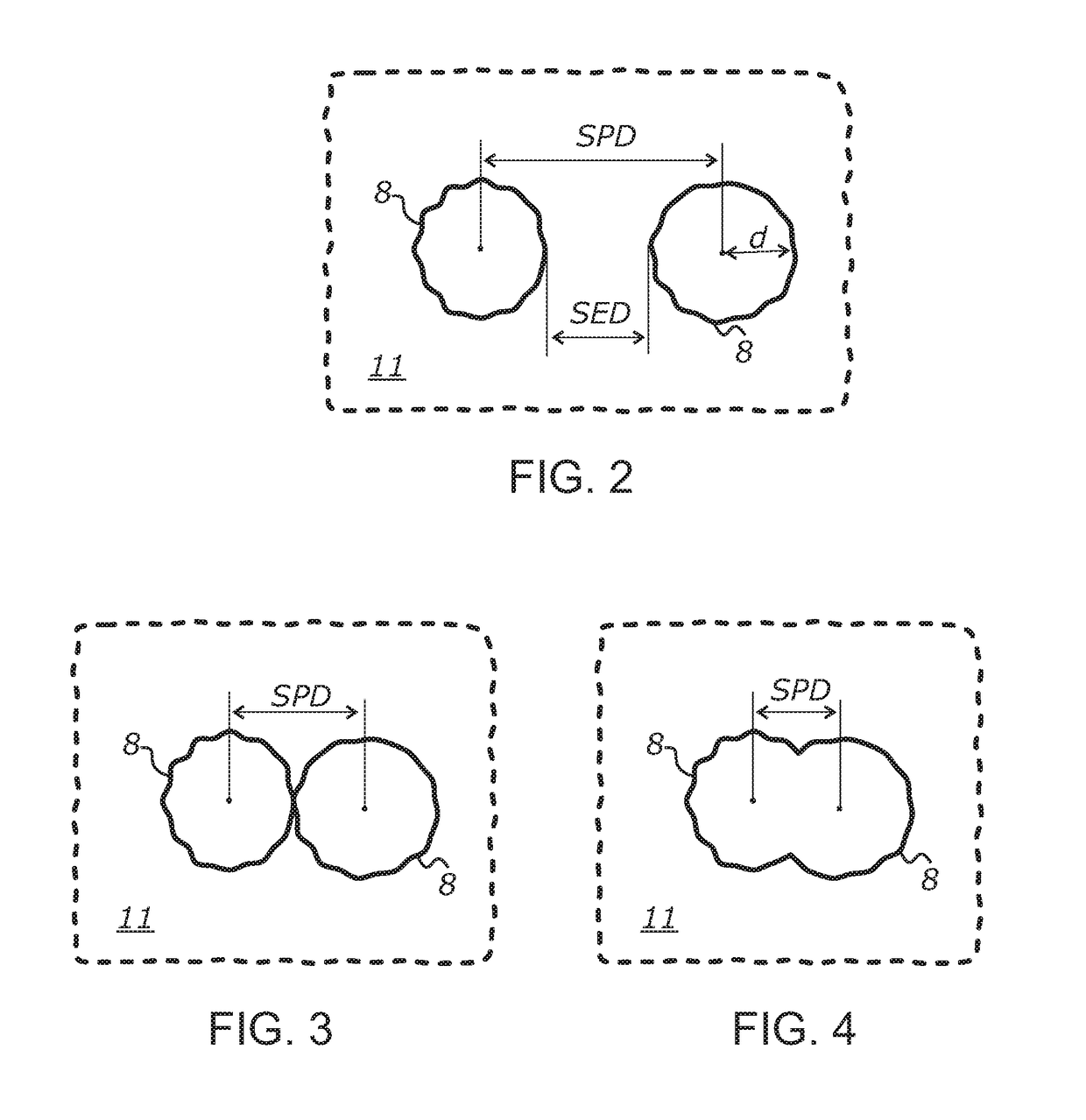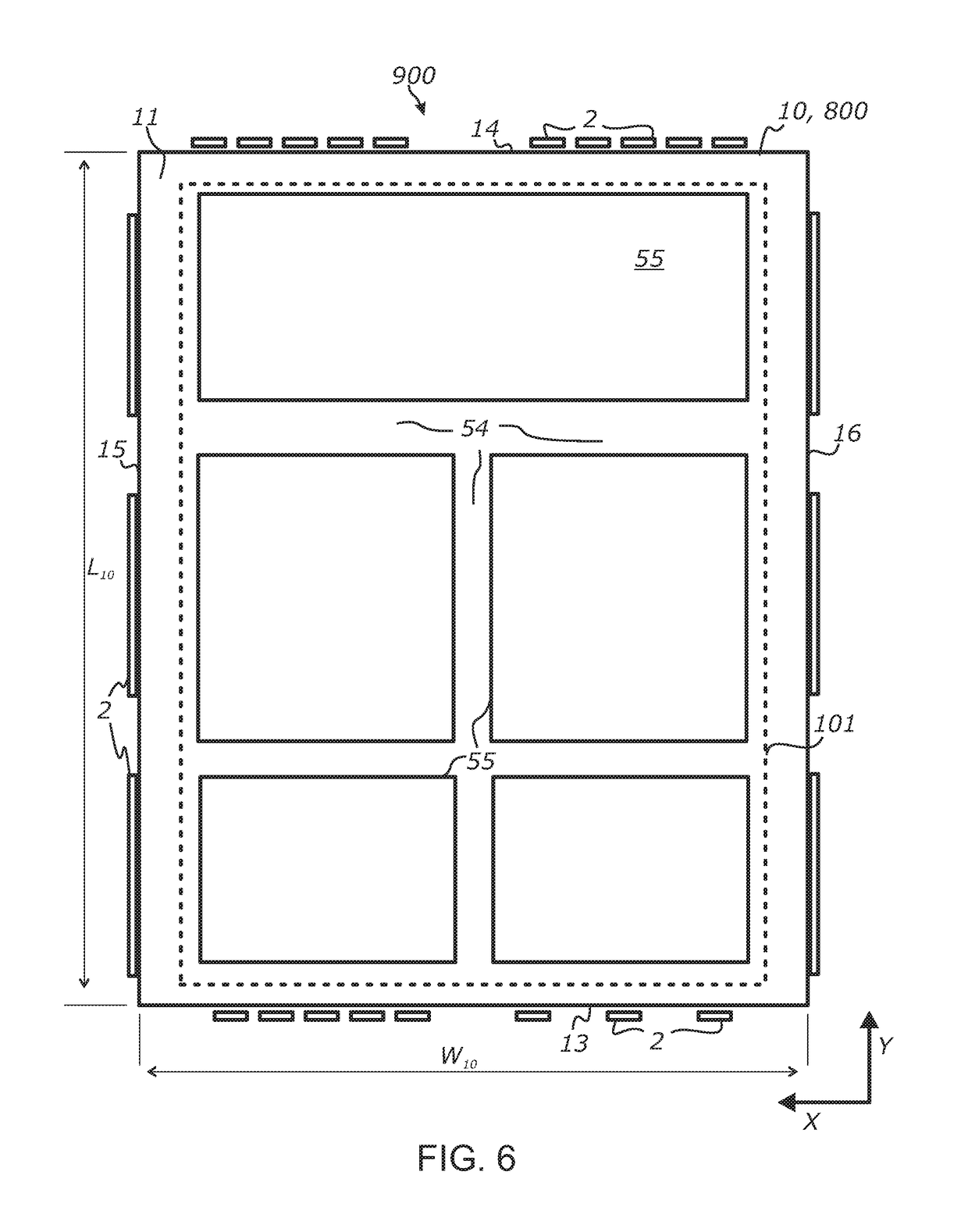Wide-area solid-state illumination devices and systems
a solid-state illumination and wide-area technology, applied in the direction of optics, instruments, optical light guides, etc., can solve the problems of energy waste, suboptimal performance, and difficulty in efficiently coupling, decoupling and/or dispersing light, and achieve the effect of high areal density
- Summary
- Abstract
- Description
- Claims
- Application Information
AI Technical Summary
Benefits of technology
Problems solved by technology
Method used
Image
Examples
example 1
End of Example 1
[0174]The graph of FIG. 11 can be approximated by a polynomial function and interpolated or extrapolated to calculate areal pattern coverage to achieve a prescribed level of opacity. In view of such results, it is noted that, according to at least some embodiments, the opacity of semi-opaque light extraction features 8 may also be approximately determined by measuring the opacity of light guiding sheet 8, particularly in the areas of relatively high density of light extraction features 8 and extrapolating the results to the 100% coverage of the surface with the respective semi-opaque layer, at the appropriate layer thickness.
[0175]The term “surface coverage” may be defined as the ratio between a cumulative area of light extraction features 8 within a sampling region and the total area of the sampling region. The area of the sampling region should be at least 100 times greater than the average or typical area of individual light extraction features 8. According to one...
example 2
[0238]A wide-area light guide illumination system was made using an edge-lit planar acrylic light guide having a thickness of about 1.5 mm and major dimensions of about 600 mm by 600 mm. The light guide was patterned on one side using microdots of a UV-cured white ink. The light guide was illuminated from two opposing edges using two strips of white SMD LEDs positioned in a close proximity to the respective edge surfaces. The total light output of the two bare LED strips (without the light guide) was measured at 4,500 lumens.
[0239]The dimensions of the light emitting aperture of each LED were about 1.2 mm by 1.2 mm. The light extraction pattern was produced by a randomized two-dimensional array of microdots deposited to the light guide surface using a commercial flatbed UV printing machine (a UV printer). The density of the pattern was made gradually increasing from the light input edges towards the center of the light guide. Each light extraction feature was represented by an indiv...
example 3
[0244]The wide-area light guide illumination system described the Example 2 was modified by adding an opaque diffuse reflector to the top surface of the planar light guide and measured using the same procedure. The measurement results are summarized in the annotated polar luminous intensity distribution graph shown in FIG. 23. Referring to FIG. 23, the total light output from the bottom surface approximately doubled compared to the Example 2. Furthermore, the measured emission in both orthogonal planes became even more closely resembling the “ideal” Lambertian emission normalized to the same total light output. The deviation between the measured intensity and the calculated intensity based on the Lambertian law constituted 5% or less for most measured angles. Due to the high opacity of the top reflector (˜100%), virtually no light was emitted from the top surface of the device.
PUM
 Login to View More
Login to View More Abstract
Description
Claims
Application Information
 Login to View More
Login to View More - R&D
- Intellectual Property
- Life Sciences
- Materials
- Tech Scout
- Unparalleled Data Quality
- Higher Quality Content
- 60% Fewer Hallucinations
Browse by: Latest US Patents, China's latest patents, Technical Efficacy Thesaurus, Application Domain, Technology Topic, Popular Technical Reports.
© 2025 PatSnap. All rights reserved.Legal|Privacy policy|Modern Slavery Act Transparency Statement|Sitemap|About US| Contact US: help@patsnap.com



